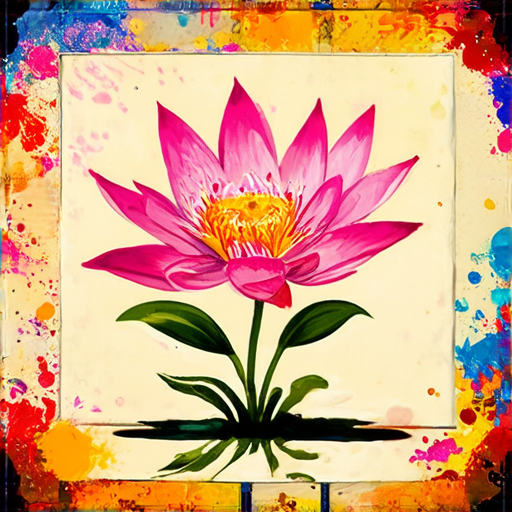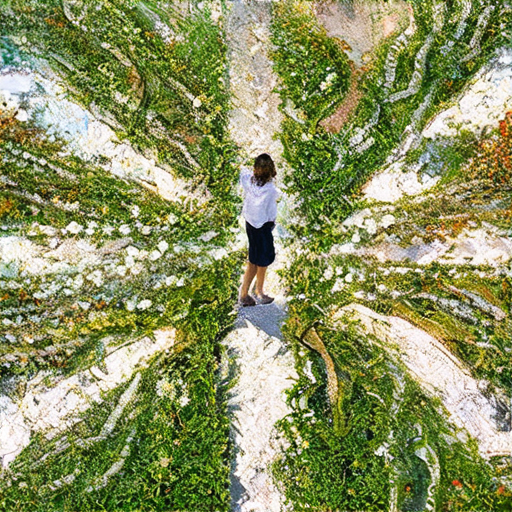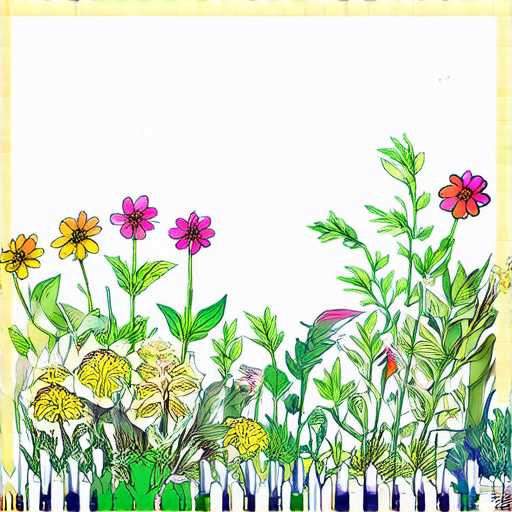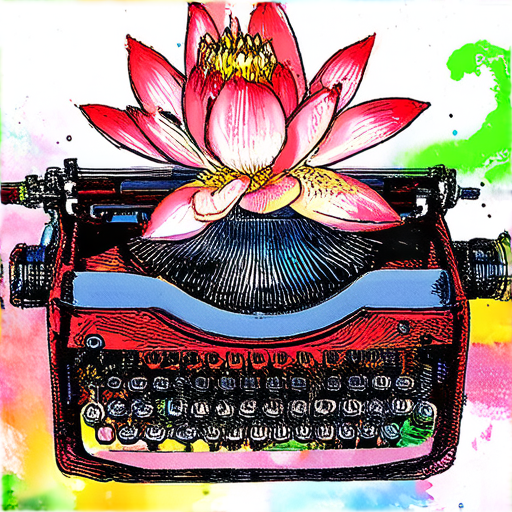Developing your unique artistic style requires a combination of creativity, dedication, and a willingness to learn and grow. As an artist, understanding how to cultivate your artistic growth is essential for producing work that truly reflects your vision and showcases your skills. In this comprehensive guide, we’ll explore the key principles and techniques necessary for unlocking artistic growth, from developing your artistic style to mastering advanced SEO-focused article writing techniques.

Becoming More Artistic
To cultivate your artistic side, start by embracing your curiosity and willingness to learn.
-
Explore Various Art Forms
Discover what sparks your interest – painting, drawing, sculpture, photography, or perhaps music, dance, or theater.
- Visit local galleries, museums, and exhibitions to gain inspiration and insight into different styles and techniques.
- Experiment with various mediums and tools to find what works best for you.
-
Develop Your Skills
Take classes, workshops, or online courses to hone your craft and learn from experienced artists.
- Practice regularly to build confidence and technique.
- Join a community of fellow artists to share knowledge, receive feedback, and stay motivated.
-
Cultivate Creativity
Nurture your imagination by exploring new ideas, themes, and perspectives.
- Keep a journal or sketchbook to record observations, thoughts, and inspirations.
- Engage in activities that stimulate your senses, such as traveling, reading, or listening to music.
-
Embrace Failure and Learning
View mistakes and setbacks as opportunities for growth and improvement.
- Analyze your work critically, identifying areas for development and refinement.
- Seek constructive feedback from peers, mentors, or instructors to guide your progress.
By embracing these principles, you’ll be well on your way to becoming a more artistic and expressive individual.
Additional Resources:
The 7 Rules of Art
The principles of art and design are essential components that contribute to the overall aesthetic appeal and effectiveness of a piece.
-
Balance
Balance refers to the distribution of visual elements within a composition, creating a sense of stability and harmony.
- Types of balance include symmetrical, asymmetrical, radial, and bilateral balance.
- Artists use balance to guide the viewer’s eye through the composition and create a sense of tension or calmness.
-
Contrast
Contrast refers to the use of different visual elements, such as color, texture, and size, to create a sense of interest and depth.
- High contrast creates a strong visual impact, while low contrast produces a more subtle effect.
- Artists use contrast to draw attention to specific elements and create a sense of hierarchy.
-
Emphasis
Emphasis refers to the focal point of a composition, drawing the viewer’s attention to a particular element or area.
- Artists use emphasis to convey meaning, express emotion, and create a sense of drama.
- Emphasis can be achieved through size, color, placement, and other visual elements.
-
Movement
Movement refers to the sense of energy and dynamism created by the arrangement of visual elements.
- Artists use movement to convey a sense of action, emotion, and energy.
- Movement can be achieved through diagonal lines, curved shapes, and other visual elements.
-
Pattern
Pattern refers to the repetition of similar visual elements, creating a sense of rhythm and unity.
- Artists use pattern to create a sense of order and coherence.
- Pattern can be achieved through repeating shapes, colors, and textures.
-
Rhythm
Rhythm refers to the repetition of visual elements, creating a sense of pulse and energy.
- Artists use rhythm to convey a sense of movement and emotion.
- Rhythm can be achieved through repeating patterns, shapes, and colors.
-
Unity
Unity refers to the sense of cohesion and wholeness created by the arrangement of visual elements.
- Artists use unity to create a sense of harmony and balance.
- Unity can be achieved through the use of similar visual elements, such as color, shape, and texture.
By understanding and applying these 7 rules of art, artists can create compositions that engage, inspire, and communicate effectively.

The Five Stages of Artistic Development
As an artist, understanding the different stages of artistic development can help you grow and improve your skills.
-
Stage 1: Exploration
This stage is all about discovering your passion and interests in art. It’s a time of experimentation and learning, where you explore different mediums and techniques to find what works best for you.
You may feel overwhelmed by the sheer number of options available, but don’t worry – this is a normal part of the process. Take your time, and remember that it’s okay to try new things and make mistakes.
Some popular resources for exploring your artistic side include:
-
Stage 2: Skill-Building
Once you’ve found your niche, it’s time to start building your skills. This stage involves practicing regularly, taking classes or workshops, and seeking feedback from others.
Remember that skill-building is a lifelong process, and there’s always room for improvement. Don’t be afraid to ask for help or seek out new challenges.
Some great resources for building your skills include:
-
Stage 3: Experimentation
Now that you have a solid foundation of skills, it’s time to start experimenting and pushing yourself outside of your comfort zone. This stage involves trying new techniques, mediums, and styles to see what works best for you.
Don’t be afraid to take risks and try something completely new – it’s often the best way to discover new ideas and inspiration.
Some inspiring examples of experimentation include:
-
Stage 4: Refining
At this stage, you’re refining your skills and developing your unique style. This involves honing in on what works best for you and eliminating what doesn’t.
Remember that refinement is a continuous process, and there’s always room for improvement. Stay open-minded and keep pushing yourself to new heights.
Some great resources for refining your skills include:
-
Stage 5: Mastery
Finally, you’ve reached the stage of mastery. At this point, you’ve refined your skills and developed a unique style that sets you apart from others.
Remember that mastery is a lifelong journey, and there’s always room for improvement. Keep pushing yourself to new heights and stay inspired by the world around you.
Some inspiring examples of mastery include:
I hope this helps you understand the five stages of artistic development! Remember to stay inspired, keep pushing yourself, and always strive for excellence.

Developing Your Artistic Style
As an artist, developing your unique style is crucial for standing out in a crowded market and expressing yourself authentically.
-
Experimentation and Exploration
Start by exploring different mediums, techniques, and styles to discover what works best for you.
- Try drawing, painting, sculpting, or printing to see which medium resonates with you.
- Experiment with various brushstrokes, colors, and textures to find your signature look.
- Study the work of other artists, both contemporary and historical, to gain inspiration and insight.
-
Identifying Your Unique Voice
Reflect on your values, experiences, and perspectives to uncover the themes and emotions that drive your art.
- Consider your personal history, cultural background, and social context to inform your artistic vision.
- Explore how your emotions, thoughts, and experiences shape your creative expression.
- Develop a distinct narrative voice or visual language that reflects your authenticity.
-
Refining Your Craft
Hone your skills through consistent practice, feedback, and self-reflection to refine your artistic style.
- Set aside dedicated time for creating and experimenting with new techniques.
- Solicit constructive feedback from peers, mentors, or online communities to identify areas for improvement.
- Analyze your progress, celebrating successes and learning from setbacks.
-
Maintaining Authenticity
Stay true to your artistic vision by embracing your uniqueness and avoiding imitation.
- Resist the temptation to copy others’ styles or emulate popular trends.
- Cultivate a sense of curiosity and openness to new ideas and influences.
- Prioritize your artistic integrity and values, even in the face of criticism or uncertainty.
By embracing experimentation, identifying your unique voice, refining your craft, and maintaining authenticity, you’ll be well on your way to developing a distinctive artistic style that showcases your creativity and individuality.
The 100 Day Art Challenge
I’ve participated in the 100 day art challenge, and it was a game-changer for my creativity.
-
What is the 100 Day Art Challenge?
- The 100 day art challenge is a commitment to creating art every day for 100 consecutive days.
- You can choose any medium you like, whether it’s painting, drawing, photography, or digital art.
- The goal is to build your creative habit and develop consistency in your artistic expression.
Benefits of Participating in the 100 Day Art Challenge
-
Improved Creativity
- By committing to creating art every day, you’ll stimulate your imagination and develop new ideas.
-
Increased Productivity
- Creating art regularly helps you stay focused and motivated, leading to increased productivity in other areas of your life.
-
Better Time Management
- The 100 day art challenge teaches you how to prioritize your time and manage your schedule effectively.
-
Enhanced Self-Discipline
- Completing the challenge requires discipline and dedication, helping you develop self-control and perseverance.
Tips for Success in the 100 Day Art Challenge
-
Start Small
-
Set Realistic Goals
-
Make it Fun
-
Join a Community
Conclusion
The 100 day art challenge is an excellent opportunity to boost your creativity, productivity, and self-discipline.
By following these tips and staying committed, you’ll be able to complete the challenge and develop a lifelong habit of creating art.

Evolve Your Art Style
As an artist, your style is unique and constantly evolving. It’s shaped by your experiences, inspirations, and creative explorations.
- Experiment with New Techniques: Try out different mediums, tools, and styles to discover what works best for you. This could mean switching from traditional drawing to digital art or exploring mixed media.
- Study the Masters: Analyze the work of renowned artists, both past and present. Understand what makes their style distinctive and how you can incorporate those elements into your own work.
- Draw from Nature: Observe the world around you – landscapes, cityscapes, textures, patterns, and shapes. Use these observations as inspiration for your art.
- Practice Consistency: Regularly set aside time to create, even if it’s just for a few minutes each day. This helps develop your skills and keeps your style fresh.
- Stay Curious: Continuously seek out new ideas, techniques, and knowledge. Attend workshops, join online communities, and engage with fellow artists to stay inspired and motivated.
Remember, your art style is a reflection of your growth as an artist. By embracing experimentation, learning from others, and staying curious, you’ll continue to evolve and refine your unique style.
Embracing Change and Growth
As your style evolves, don’t be afraid to try new things and take risks. This is where the most exciting discoveries happen, and your art becomes truly authentic.
- Be Patient: Evolution takes time, so enjoy the journey and celebrate small victories along the way.
- Stay True to Yourself: While experimenting with new styles, remember to hold onto what makes your art uniquely yours.
- Learn from Criticism: Constructive feedback can help you identify areas for improvement and refine your style further.
- Keep Exploring: Continuously seek out new sources of inspiration, whether it’s through travel, reading, or interacting with other artists.
Conclusion
Your art style is a dynamic and ever-changing aspect of your creative journey. By embracing experimentation, learning from others, and staying curious, you’ll continue to grow and refine your unique style. Remember to be patient, true to yourself, and open to constructive criticism. With dedication and passion, you’ll evolve your art style and become the best version of yourself as an artist.

0 Comments